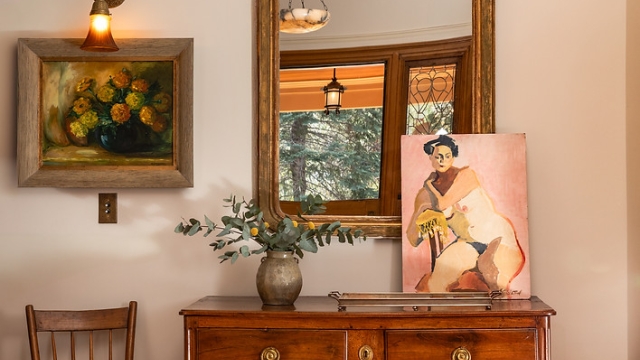
Transform Your Space: Unleashing the Art of Interior Design

Interior design is more than just arranging furniture and choosing colors; it is an art that transforms spaces into reflections of our personalities and lifestyles. Every room we inhabit has the potential to tell a story, evoke emotions, and create an ambiance that resonates with us. Whether you are redesigning your home or simply looking to refresh a single space, understanding the principles of interior design can lead to remarkable changes that enhance both functionality and aesthetics.
In this journey of transformation, we will explore the essential elements of interior design that empower you to unleash your creativity. From selecting the right color palette to incorporating textures and styles that resonate with your vision, each decision you make can drastically alter the feel of your environment. Join us as we delve into the world of interior design, where inspiration meets practicality, and learn how to bring your unique style to life.
Understanding Interior Design Principles
Interior design is more than just arranging furniture; it’s about creating a harmonious environment that reflects the personalities and needs of its occupants. Key principles guide this creative process, allowing designers to craft spaces that are both functional and aesthetically pleasing. These principles include balance, scale, proportion, and rhythm, which work together to establish a welcoming atmosphere.
Balance refers to the distribution of visual weight in a space. It can be achieved through symmetrical or asymmetrical arrangements, where symmetrical balance offers a formal and orderly look, while asymmetrical balance provides a more casual and dynamic feel. Understanding balance helps designers create areas that feel stable and inviting, encouraging people to spend time in those spaces.
Scale and proportion deal with the size of objects in relation to one another and the space they inhabit. Scale ensures that furniture and decor fit comfortably within a room, while proportion focuses on the relationship between different elements. Paying attention to these principles helps to avoid overwhelming a space or creating an awkward atmosphere, leading to a more cohesive and pleasant living environment.
Choosing the Right Color Palette
Selecting the right color palette is a crucial step in creating a harmonious interior design. Colors evoke emotions and set the mood for a space, influencing how we feel and interact within it. To start, consider the purpose of the room and how you want it to function. For example, soothing tones like blues and greens are ideal for bedrooms, promoting relaxation, while vibrant hues such as reds or yellows can stimulate energy in living areas or playrooms.
When narrowing down your color options, it can be helpful to rely on the concept of the color wheel. Complementary colors—those that sit opposite each other on the wheel—can create striking contrasts and visual interest. Alternatively, analogous colors—those that reside next to each other—offer a more cohesive and tranquil vibe. Think about how these combinations would work in your specific space and how they enhance the existing elements, such as furniture and décor.
Finally, don’t overlook the importance of lighting, which can dramatically alter the appearance of colors. Natural light versus artificial lighting can change how a color looks throughout the day. Always test paint samples on your walls to see how they shift in different lighting conditions before committing. By carefully choosing a color palette that reflects your personal style and suits the function of the room, you can transform your space into a beautifully designed haven.
Maximizing Space Efficiency
Find Out More
When it comes to interior design, maximizing space efficiency is crucial for creating an organized and functional environment. One effective approach is to incorporate multi-purpose furniture. For example, consider a coffee table that doubles as a storage unit or a sofa bed that accommodates guests while maintaining a stylish living area. This not only saves space but also enhances the flow of the room, allowing for a more versatile layout that can adapt to different needs.
Another key strategy is to utilize vertical space effectively. Tall bookshelves, wall-mounted cabinets, and floating shelves draw the eye upward, which can make a room feel larger and more open. This technique not only provides additional storage but also showcases decorative items, plants, or artwork, adding character and depth to your interiors. By embracing verticality, you can create a visually striking yet functional space.
Finally, clever zoning can make a significant difference in how we perceive and use our space. Using rugs, screens, or even furniture placement can help define different areas within a room, such as a cozy reading nook or a productive work corner. By establishing clear zones, you can improve both the aesthetics and functionality of the area, making it easier to navigate and enjoy your surroundings. Maximizing space efficiency through these techniques allows you to transform any area into a harmonious and practical home.
Incorporating Personal Style
One of the most rewarding aspects of interior design is the opportunity to infuse your personal style into your living space. This process begins with understanding your preferences and the elements that resonate with you. Whether you are drawn to a minimalist aesthetic, a cozy bohemian vibe, or sleek modernism, identifying your style will guide your choices throughout the design process. Spend time exploring various inspirations, from magazines to social media platforms, and create a vision board that encapsulates the essence of your ideal space.
Once you have a clear vision, it’s essential to select furnishings and decor that reflect your personality. Incorporate unique pieces that tell a story—perhaps a vintage chair you inherited or art created by a local artist. Mixing and matching styles can also enhance the character of your space, allowing you to create a cohesive yet dynamic environment. Remember, the goal is to curate an atmosphere that feels authentically you, even if it means stepping outside conventional design rules.
Finally, don’t underestimate the power of color and texture in expressing personal style. Choose a color palette that evokes emotions you wish to experience in your space, and consider how different textures can add depth and interest. Layering fabrics, mixing surfaces like wood and metal, and incorporating greenery can all contribute to a unique and inviting atmosphere. By thoughtfully combining these elements, you can transform your home into a reflection of who you are, ensuring it remains a space where you truly feel at home.



